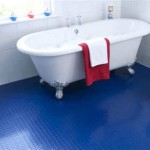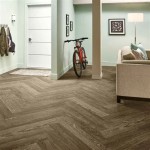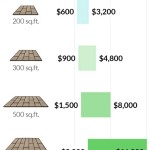Ceramic Tile or Laminate Wood Flooring in Kitchen: A Comprehensive Comparison
The kitchen, often considered the heart of the home, demands flooring that is both aesthetically pleasing and highly functional. Choosing the right material is a crucial decision that impacts the kitchen's overall look, longevity, and ease of maintenance. Ceramic tile and laminate wood flooring are two popular choices, each offering unique advantages and disadvantages. Understanding these distinctions is essential for homeowners seeking to make an informed decision that aligns with their lifestyle, budget, and design preferences.
This article provides a comprehensive comparison of ceramic tile and laminate wood flooring specifically for kitchen applications. It examines various aspects, including durability, water resistance, maintenance, cost, aesthetics, installation, and environmental impact, to help readers determine which material best suits their individual needs.
Durability and Longevity
Durability is paramount in the kitchen, a high-traffic area prone to spills, dropped objects, and general wear and tear. Ceramic tile is widely recognized for its exceptional durability. It is manufactured through a firing process at high temperatures, resulting in a hard, dense material that resists scratches, dents, and chipping. A well-maintained ceramic tile floor can last for decades, making it a long-term investment.
The durability of ceramic tile is often measured using the Porcelain Enamel Institute (PEI) rating. This rating assesses a tile's resistance to abrasion. Tiles with a PEI rating of 3 or higher are generally recommended for residential kitchens. This rating indicates that the tile can withstand moderate foot traffic and is suitable for areas where spills and dirt are common.
Laminate wood flooring, on the other hand, consists of several layers, including a core of high-density fiberboard (HDF) and a wear layer that protects the underlying image. While laminate flooring is designed to be durable, it is generally not as resistant to scratches and dents as ceramic tile. The quality of the wear layer is a critical factor in determining the lifespan of laminate flooring. Thicker wear layers offer greater protection against wear and tear.
It is important to note that laminate flooring is susceptible to damage from standing water. If water penetrates the seams or the core of the flooring, the HDF can swell and warp, leading to irreversible damage. Therefore, while laminate flooring provides a certain level of resistance to surface spills, it is not as impervious to water as ceramic tile.
Water Resistance and Moisture Management
Water resistance is a critical consideration for kitchen flooring due to the frequent occurrence of spills and potential leaks. Ceramic tile is inherently water-resistant, making it an ideal choice for kitchens. The dense structure of ceramic tile prevents water from penetrating the surface, protecting the subfloor from moisture damage. Grout lines, however, can be porous and require sealing to prevent water absorption and staining.
Properly sealed grout lines create a watertight barrier, preventing water from seeping beneath the tiles. This is particularly important in areas prone to spills, such as around the sink and dishwasher. Regular resealing of the grout lines is recommended to maintain their water-resistant properties.
Laminate wood flooring offers some degree of water resistance, but it is not waterproof. The wear layer on laminate flooring can repel surface spills for a short period, but prolonged exposure to water can lead to damage. As mentioned earlier, water penetration into the seams or core can cause the HDF to swell and warp. Water resistant laminate flooring is an option, but still must be cleaned up immediately after spills.
Specialized laminate flooring products are available that offer enhanced water resistance, often marketed as "waterproof" or "water-resistant." These products typically feature a tighter locking system and a more robust core material that is less susceptible to water damage. However, even these products are not entirely impervious to water and require prompt cleanup of spills to prevent potential problems.
Maintenance and Cleaning
Ease of maintenance is a significant factor for busy homeowners. Ceramic tile is relatively easy to clean and maintain. Regular sweeping or vacuuming removes dirt and debris, and occasional mopping with a mild detergent keeps the tiles looking their best. The non-porous surface of ceramic tile resists stains and makes spills easy to clean.
Grout lines, however, can be more challenging to clean. Grout is porous and can absorb stains and dirt. Regular cleaning with a grout cleaner and a scrub brush is necessary to maintain the appearance of the grout. Sealing the grout helps to prevent staining and makes cleaning easier.
Laminate wood flooring is also relatively easy to clean. Regular sweeping or vacuuming removes dirt and debris, and occasional mopping with a damp (not wet) mop keeps the floor clean. It's crucial to avoid excessive moisture when cleaning laminate flooring to prevent water damage. Using a cleaner specifically designed for laminate flooring is also recommended to prevent streaking and damage to the finish.
The textured surface of some laminate flooring can trap dirt and debris, requiring more frequent cleaning. It is also important to avoid harsh chemicals and abrasive cleaners, as these can damage the wear layer and dull the finish of the laminate flooring.
Cost Considerations
The cost of flooring materials and installation is a major consideration for most homeowners. Ceramic tile typically falls within a moderate price range, with prices varying depending on the size, design, and quality of the tile. Installation costs can also vary depending on the complexity of the project and the experience of the installer.
The initial cost of ceramic tile may be higher than some other flooring options, but its long lifespan and durability can make it a cost-effective choice in the long run. Ceramic tile is less likely to require replacement due to wear and tear, reducing the overall cost of ownership.
Laminate wood flooring is generally less expensive than ceramic tile, both in terms of materials and installation costs. Laminate flooring is often a more budget-friendly option for homeowners seeking a wood-look floor without the high cost of hardwood.
However, the lower cost of laminate flooring may be offset by its shorter lifespan. Laminate flooring is more susceptible to damage and may require replacement sooner than ceramic tile. Therefore, it is important to consider the long-term cost of ownership when comparing these two materials.
Aesthetic Versatility
Both ceramic tile and laminate wood flooring offer a wide range of aesthetic options to suit various design styles. Ceramic tile is available in a vast array of colors, sizes, shapes, and patterns. It can mimic natural stone, wood, and other materials, providing endless design possibilities.
The ability to create intricate patterns and designs with ceramic tile allows for a high degree of customization. Mosaic tiles, decorative borders, and custom layouts can be used to create a unique and personalized kitchen floor.
Laminate wood flooring is designed to replicate the look of natural wood. It is available in a wide variety of wood species, colors, and plank sizes. Laminate flooring can provide the warmth and beauty of wood at a more affordable price.
The realism of laminate wood flooring has improved significantly in recent years, with many products featuring textured surfaces and realistic wood grain patterns. Embossed-in-register (EIR) technology further enhances the realism by aligning the texture with the printed image, creating a more authentic wood look.
Installation Complexity
The installation process for ceramic tile is generally more complex and time-consuming than that for laminate wood flooring. Ceramic tile requires a stable and level subfloor, as well as the use of mortar and grout. Professional installation is often recommended to ensure a proper and long-lasting installation.
The complexity of ceramic tile installation can also add to the overall cost of the project. Hiring a qualified tile installer can ensure that the tiles are properly laid, leveled, and grouted, preventing future problems such as cracking or water damage.
Laminate wood flooring is designed for easy installation, often featuring a click-lock system that allows the planks to be snapped together without the need for adhesives. Many homeowners can install laminate flooring themselves, saving on installation costs.
However, proper preparation of the subfloor is still essential for a successful laminate flooring installation. The subfloor must be clean, level, and dry to prevent problems such as warping or buckling. Underlayment is also required to provide cushioning, reduce noise, and protect the laminate flooring from moisture.
Environmental Impact
The environmental impact of flooring materials is an increasingly important consideration for environmentally conscious homeowners. Ceramic tile is made from natural materials such as clay, sand, and water. The manufacturing process can be energy-intensive, but many manufacturers are implementing sustainable practices to reduce their environmental footprint.
Recycled ceramic tile is also available, offering a more environmentally friendly option. Recycled tiles are made from post-consumer or post-industrial waste materials, reducing the demand for virgin resources.
Laminate wood flooring is made from wood fibers and resins. The environmental impact of laminate flooring depends on the source of the wood fibers and the types of resins used. Products certified by organizations such as the Forest Stewardship Council (FSC) are made from responsibly sourced wood.
Low-VOC (volatile organic compound) laminate flooring is also available, reducing the emission of harmful chemicals into the indoor environment. Choosing products with low-VOC certification can improve indoor air quality and protect the health of occupants.

Tile Flooring Vs Laminate I Tiles Diy

Tile Flooring Vs Laminate Compare Major Differences And Costs Forbes Home

Tile Vs Wood Flooring Major Differences Pros Cons And Costs Forbes Home

Tile Flooring Vs Laminate Compare Major Differences And Costs Forbes Home

Tile Wood Or Laminate How To Choose The Right Floor For You

Wood Tile And Laminate Floors

The Complete Guide To Kitchen Floor Tile Why

Wood Flooring Or Luxury Vinyl Tiles Lvt For Your Kitchen Dwf Blog Direct

Best Kitchen Flooring Floor Ideas For Your Home

What Is The Best Type Of Flooring For A Kitchen Wood Tiles Laminate Quora








